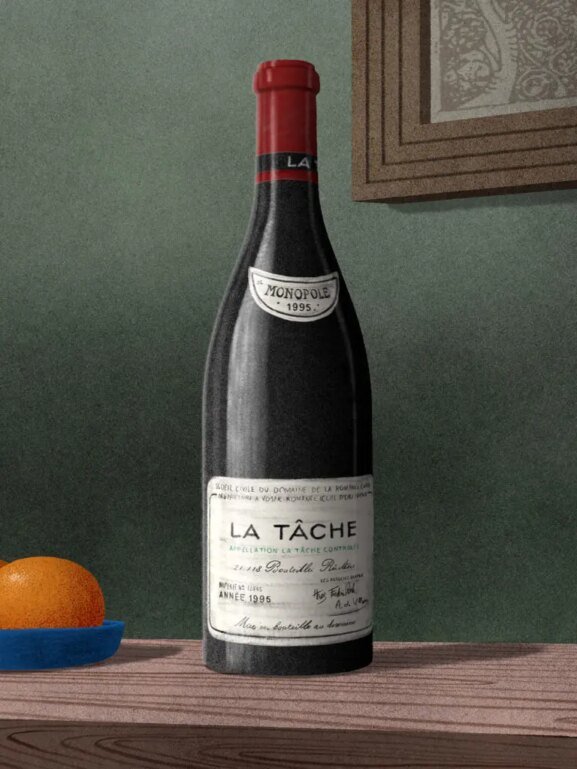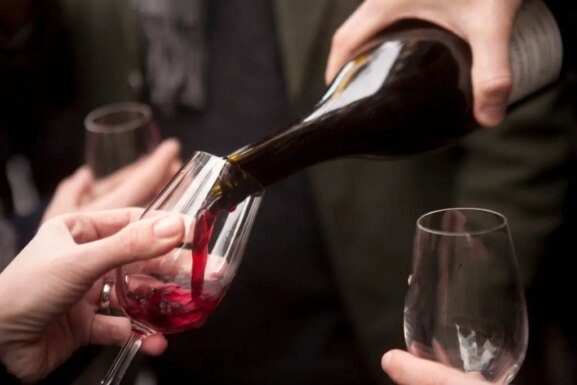Tariffs Have Transformed the Wine World as We Know It
When the news broke about the Trump administration threats to impose a 200% tariff on European wines, Jenny Lefcourt, president and co-founder of Jenny & François Selections, was hiking in the Grand Canyon. From the trail, she called her office and froze all shipments.
“Two hundred percent would have put me out of business,” Lefcourt says.
After months of back-and-forths, the levy eventually settled at 15%. Still, the damage was done for all stakeholders in the wine and spirits world. Trust eroded between producers, importers, and the federal government. Margins collapsed across the whole world. The future is shaky for anyone who can’t lower prices.
While the U.S. Court of Appeals recently clipped the administration’s wings—declaring his unilateral levies illegal—those fees remain in place as the case moves toward the Supreme Court for further deliberations.
The global wine and spirits industry remains in suspense; and every point in the supply chain has been forced to compromise in some way or form. From European producers to American importers and wine directors, tariffs have forced every player to readjust their business practices..
Importers on Edge
Lefcourt describes those early weeks as a frantic exercise in triage. “I got on the phone with every producer we work with to negotiate pricing.” she says. “Some said, ‘I can sell elsewhere, I don’t need to lower my prices.’ Others said, ‘We’ll meet you halfway, we won’t make money this vintage but we want the wines to remain in the market.’ Every decision was case by case. It was exhausting.”
Though the tariffs themselves have been stressful enough, the uncertainty and volatility has been even more disastrous for Lefcourt and other importers. “Two hundred percent? Twenty five percent? None? Exemptions for goods already in transit? It turns planning into pure gambling,” she says. “That’s terrible for the economy and morale.”
That 15% tariff combined with weaker dollar, higher shipping prices, and already rising costs for land, labor, and viticultural supplies in Europe have pushed expenses for importers over 30% what they were a few years ago.
// Create the element
var script_68e0328a835d4 = document.createElement(“script”);
script_68e0328a835d4.innerHTML = `
window.googletag = window.googletag || {cmd: []};
googletag.cmd.push(function() {
var adType = “leaderboard”;
var mapping;
var lbmapping = googletag.sizeMapping()
.addSize([1024, 0], [[970, 250], [970, 90], [1, 1], [728, 90]])
.addSize([728, 0], [[728, 90], [1, 1]])
.addSize([320, 0], [[1, 1], [300, 50], [300, 100], [320, 50], [320, 100]])
.addSize([0, 0], [[1, 1], [320, 50]])
.build();; // Size mapping for leaderboard ads
var medrecmapping = googletag.sizeMapping()
.addSize([1024, 0], [[300, 600],[300, 250]])
.addSize([728, 0], [300, 250])
.addSize([320, 0], [[1, 1],[300, 250]])
.addSize([0, 0], [[1, 1], [300, 250]])
.build(); // Size mapping for med rectengle ads
if(‘/39808611/article_page/article_leaderboard_1’ == ‘/39808611/article_page/article_leaderboard_1’
|| ‘/39808611/article_page/article_leaderboard_1’ == ‘/39808611/article_page/article_leaderboard_2’
|| ‘/39808611/article_page/article_leaderboard_1’ == ‘/39808611/article_page/article_leaderboard_3’) {
mapping = googletag.sizeMapping()
.addSize([1920, 0], [[728, 90]]) // >= 1920px
.addSize([1440, 0], [[728, 90]]) // 1440px-1919px
.addSize([730, 0], [[300, 250]]) // 730px-1439px
.addSize([0, 0], [[320, 100], [320, 50], [300, 100], [300, 50], [300, 250]]) // Up to 729px
.build();
} else {
mapping = adType == ‘leaderboard’ ? lbmapping : medrecmapping;
}
googletag.defineSlot(‘/39808611/article_page/article_leaderboard_1’, [],
‘div-gpt-ad-68e0328a835d4’).addService(googletag.pubads()).defineSizeMapping(mapping);
googletag.pubads().enableSingleRequest();
googletag.pubads().collapseEmptyDivs();
googletag.display(‘div-gpt-ad-68e0328a835d4’);
});
`;
// Append the script to the body
document.body.appendChild(script_68e0328a835d4);
Yet, many U.S. importers, like Credo Imports, have been sharing the cost burden with producers, cutting their own margins when necessary in an attempt to stave off price increases for consumers. “We had upfront discussions to make sure they felt we were advocates, not adversaries,” says Credo Imports Co-Owner Matthew Goss.
These escalating costs are seriously impacting the bottom line. Many importers have had to cut jobs or hold off on hiring and expanding their businesses. Lefcourt, for instance, had planned to bring two new employees this year, but didn’t due to lack of time, energy, and capital. “I had to work on strategies for guessing how to price wines in a constantly shifting tariff landscape and put funds aside for paying the tariffs,” she says.
If the tariffs are left in place, importers are going to have to seriously consider each and every SKU. Chances are, the diversity of wine in the U.S. market will shrink. “Paying 15% upfront makes cash flow more difficult,” Lefcourt says. “Importers will take fewer risks, and that means fewer grower Champagnes, fewer offbeat bottles.”
And this damage may last for years and decades to come. “I think we’ve lost credibility as buyers and economic partners,” Goss says. “Emerging markets, especially Southeast Asia, are proving vibrant alternatives. I fear we won’t realize the effects until that market grows to the point where we’re playing catch-up.”
Winemakers in Limbo
On both sides of the Atlantic, growers are feeling the sting.
American vintners are dealing with increased costs of production supplies, decreased sales due to international boycotts, and already shrinking sales, as well as potential retaliatory tariffs on U.S. wine and spirits starting next year.
Across the pond, many European producers have seen substantial drops in sales. “The uncertainty surrounding customs duties has naturally led to fewer orders,” says Michi Lorenz of his eponymous winery in Styria, Austria.
I find that unfair because I didn’t vote for the guy!
Martin Nittnaus of Weingut Nittnaus
Other producers have been asked to take the financial hit on the orders that do come through. “Our importer made big orders before all this, so we haven’t been affected yet, but I’ve heard some others are asking wineries to share the tariff,” Martin Nittnaus of Weingut Nittnaus in Burgenland, Austria. “I find that unfair because I didn’t vote for the guy!”
Some regions outside the E.U. are getting hit even harder. Serbian tariffs, for example, are currently set at 35%—which practically equates to a ban. The small producers, which were just starting to make a name for themselves among American wine nerds, cannot compete with bottles from more famous regions.
Serbian Winemaker Aleksandar Todorović, whose self-titled wines normally sell for $20 to $30 in the United States, is hoping the tariffs will be removed or at least decreased soon. “I honestly don’t think this will last,” he says. “But I cannot lower my already more than competitive prices.”
Restaurants Reconsidering Wine Lists
While growers balance orders and importers calculate margins, restaurants at the end of the chain are left struggling for survival. Wine and cocktails deliver the highest profits with gross margins between 70% to 80%, while food sales account for just 60% to 70% of gross revenue.
When the cost of wine goes up, those profit margins go down. Like every other sector of the economy, the hospitality industry is grappling with the rising costs of labor, food, electricity, and everything else. Mackenzie Hoffman, owner of Stir Crazy in Los Angeles, says tariffs are “just another crack in an already fragile supply chain.”
Rather than take another financial hit, she decided to pivot. “I started working with local wineries to buy our house wines—creating a microeconomic loop: farmer, winemaker, distributor, wine rep, myself as operator, then the guest,” she says. “Every stakeholder benefits.”
Her California-made house wines may be part of a growing trend of restaurants creating their own labels, but it signals a profound shift in this age of tariffs. Most by-the-glass programs are margin plays. The industry standard is to pay off the cost of the bottle with the sale of the first glass, so beverage program managers prioritize value-oriented selections..
Hoffman’s new tact prioritizes long-term resilience. By working with local producers she is sourcing higher quality wines for the price and doesn’t have to worry about complicated economic issues like a weakened dollar or politically-motivated tariffs.
// Create the element
var script_68e0328a83d72 = document.createElement(“script”);
script_68e0328a83d72.innerHTML = `
window.googletag = window.googletag || {cmd: []};
googletag.cmd.push(function() {
var adType = “leaderboard”;
var mapping;
var lbmapping = googletag.sizeMapping()
.addSize([1024, 0], [[970, 250], [970, 90], [1, 1], [728, 90]])
.addSize([728, 0], [[728, 90], [1, 1]])
.addSize([320, 0], [[1, 1], [300, 50], [300, 100], [320, 50], [320, 100]])
.addSize([0, 0], [[1, 1], [320, 50]])
.build();; // Size mapping for leaderboard ads
var medrecmapping = googletag.sizeMapping()
.addSize([1024, 0], [[300, 600],[300, 250]])
.addSize([728, 0], [300, 250])
.addSize([320, 0], [[1, 1],[300, 250]])
.addSize([0, 0], [[1, 1], [300, 250]])
.build(); // Size mapping for med rectengle ads
if(‘/39808611/article_page/article_leaderboard_2’ == ‘/39808611/article_page/article_leaderboard_1’
|| ‘/39808611/article_page/article_leaderboard_2’ == ‘/39808611/article_page/article_leaderboard_2’
|| ‘/39808611/article_page/article_leaderboard_2’ == ‘/39808611/article_page/article_leaderboard_3’) {
mapping = googletag.sizeMapping()
.addSize([1920, 0], [[728, 90]]) // >= 1920px
.addSize([1440, 0], [[728, 90]]) // 1440px-1919px
.addSize([730, 0], [[300, 250]]) // 730px-1439px
.addSize([0, 0], [[320, 100], [320, 50], [300, 100], [300, 50], [300, 250]]) // Up to 729px
.build();
} else {
mapping = adType == ‘leaderboard’ ? lbmapping : medrecmapping;
}
googletag.defineSlot(‘/39808611/article_page/article_leaderboard_2’, [],
‘div-gpt-ad-68e0328a83d72’).addService(googletag.pubads()).defineSizeMapping(mapping);
googletag.pubads().enableSingleRequest();
googletag.pubads().collapseEmptyDivs();
googletag.display(‘div-gpt-ad-68e0328a83d72’);
});
`;
// Append the script to the body
document.body.appendChild(script_68e0328a83d72);
“It isn’t about nationalism: wine is a global community, and my bottle list is still 90% European,” Hoffman says. “But by-the-glass is where I can go deep on California. It’s a way to withstand tariffs, inflation, and supply-chain shocks.”
In Miami, Jacqueline Pirolo, managing partner at Macchialina, a restaurant that focuses solely on Italian wines, worries that as tariffs increase the cost of wines on lists, consumers will be discouraged from exploring the less familiar options on her well-curated list.
Italy’s hundreds of indigenous grapes—Ciliegiolo, Schioppettino, Frappato—not only offer approachable options at modest prices but they preserve regional culture and history. This sense of discovery is what many of us love about wine in the first place, especially the pros, like Pirolo, who dedicate their lives to sharing their in-depth knowledge with diners. “Add tariffs, and guests may retreat to Sangiovese, because they’ve heard of it,” she says.
However, Pirolo’s concern runs deeper than merely sharing her passion with guests. If importers choose to drop these lesser-known varieties, producers will be forced to decide between risking their business to maintain their agricultural heritage or replacing their vines with safer, more commercial grapes—echoing the post-WWII industrialization patterns, Pirolo notes, which small players across the globe have recently been railing against.
A Fragile Chain
These effects are already sending shockwaves through the industry.
European winemakers are already getting fewer orders at a time when sales are already decreasing. Sommeliers are being forced to rethink their wine programs. Importers are frantically halting international shipping containers from canyon hikes.
Every person and business in the global wine and spirits supply chain is feeling the consequences. Bridges are burning, rather than being built—with damage that could potentially last decades.
“Our European partners feel sorry for us, and for the world in general, that this maniac with a 19th-century view of trade is the President of the United States,” says Lefcourt. “He’s breaking free trade agreements and creating enemies where we had friends.”
More Wine Industry News
- Chinese wine is on the rise in America—tariffs be damned.
- It’s officially time to stop criticizing Gen Z’s drinking habits.
- Young people aren’t starting bar tabs, and we think we know why.
- The recent DoorDash delivery trends report is full of surprises about booze.
- Believe it or not, there is good news for the wine industry.
From the Shop
Find Your Wine a Home
Our selection of red wine glasses is the best way to enjoy the wine’s subtle aromas and bright flavors.
The post Tariffs Have Transformed the Wine World as We Know It appeared first on Wine Enthusiast.


